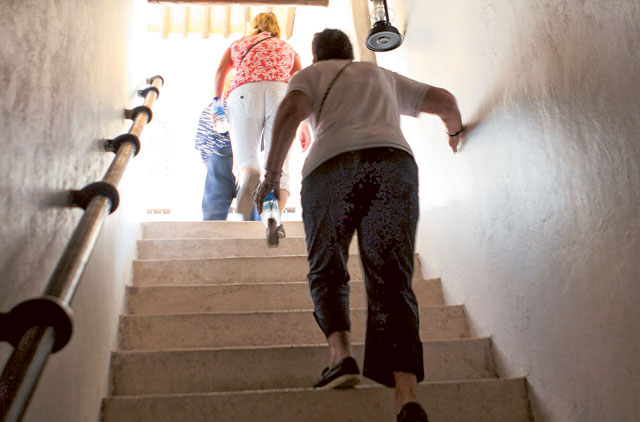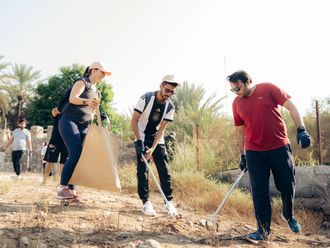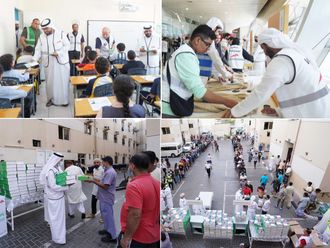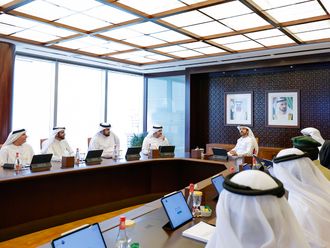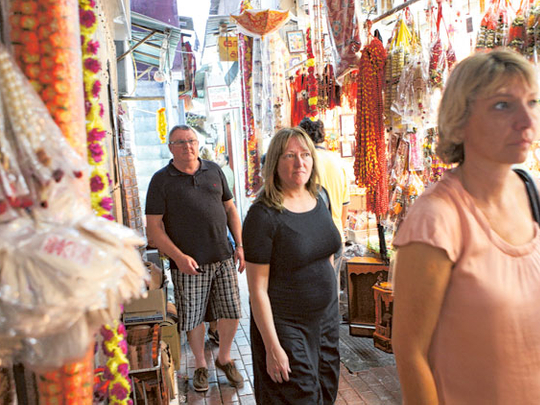
Dubai: Even for residents, a heritage tour of old Dubai — whether it is traversing the bylanes of Al Bastakiya or exploring the historic structures in Shindagha, invariably provides glimpses of little-known vignettes of history and culture.
Take the two-storeyed Shaikh Saeed Al Maktoum House in Shindagha that was restored in 1986. It is a welcome experience even for those used to a skyline dominated by skyscrapers. A prototype of a traditional courtyard house with high-beamed ceilings, arched doorways, wind towers (barajeels), sculpted window overhangs and trellis (open latticework) screens, it takes the viewers back in time.
The authority behind the restoration project — the Architectural Heritage Department — aims to rebuild Shindagha as it was in the 1950s. Then there is Al Bastakiya, established in 1859. Roughly a 10-minute drive away, its interconnected structures in sand-textured exteriors, narrow lanes, courtyards, and wind towers tell a story of life in days gone by and are reminiscent of how Dubai once looked. Today the area is a cultural destination, featuring galleries, museums and Arabic cafes.
From Al Bastakiya one can access the fragrant lane of the Hindu temple, visit the textile souq, hop on an abra (water taxi) across the Dubai Creek from Bur Dubai to Deira and explore the aromatic lanes of the spice souq or the glittering sights of the gold souq.
The souqs are lined with standalone shops and are highlighted by elaborate Arabic architecture, offering both residents and visitors a unique shopping experience unlike any present-day supermarket.
And almost all these experiences are enjoyed on foot.
Pedestrian-friendly is perhaps not a phrase Dubai is known for. Yet, according to the guide from the organising tour company Arabian Adventures, residents might not be aware that Dubai is a wonderful place to explore on foot, especially its old parts.
Partha Sawardekar told Gulf News that not many residents visit these areas. “Sadly less than five per cent of the guests on these tours are residents. Those who have experienced it have returned saying, ‘We never knew there was so much to see’.”
Gulf News also spoke to a few tourists for whom a heritage tour offers another facet of the city.
Michael Heapy, a British tourist, has been visiting Dubai since 1997. He said that the old cultural areas have piqued his interest in the trading history of the emirate, and given him multiple entry points to understanding it better. “This is the first time we have visited old Dubai. It is amazing to learn about the city’s development.” His partner Julie added, “It was something we hadn’t done. It is like stepping back in time.”
Austrian tourist Allison Stewart-Klein, a first-time visitor, was on a 24-hour stopover. She said she is interested in history and culture, and instead of seeing skyscrapers, she chose to update herself with a visit to the cultural sites. “You can see modern buildings in several cities, but historical areas are fascinating.”
Josie Loraine, a British tourist said, “It has been interesting to see the old parts. We feel privileged to walk around areas that haven’t been modernised like so many other places. It is good that these have been preserved.”


